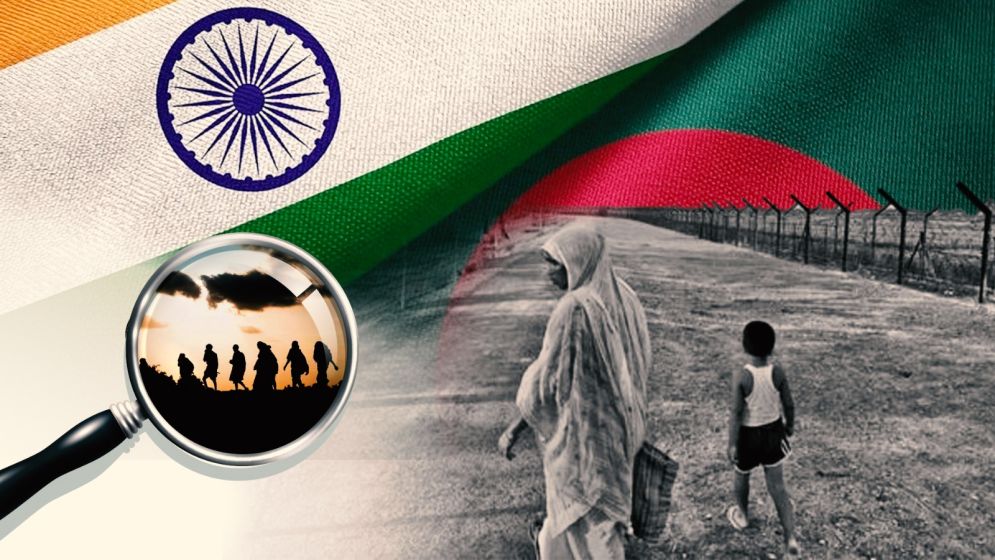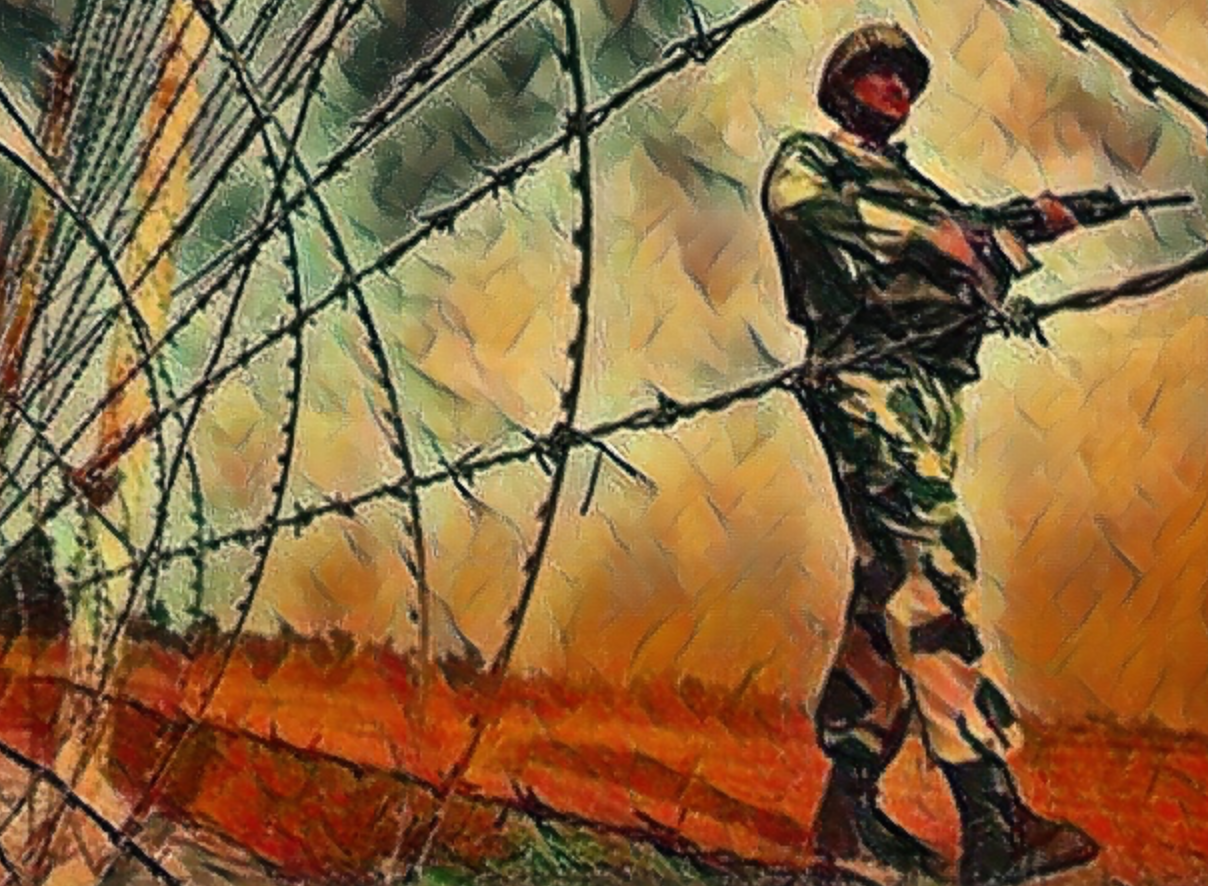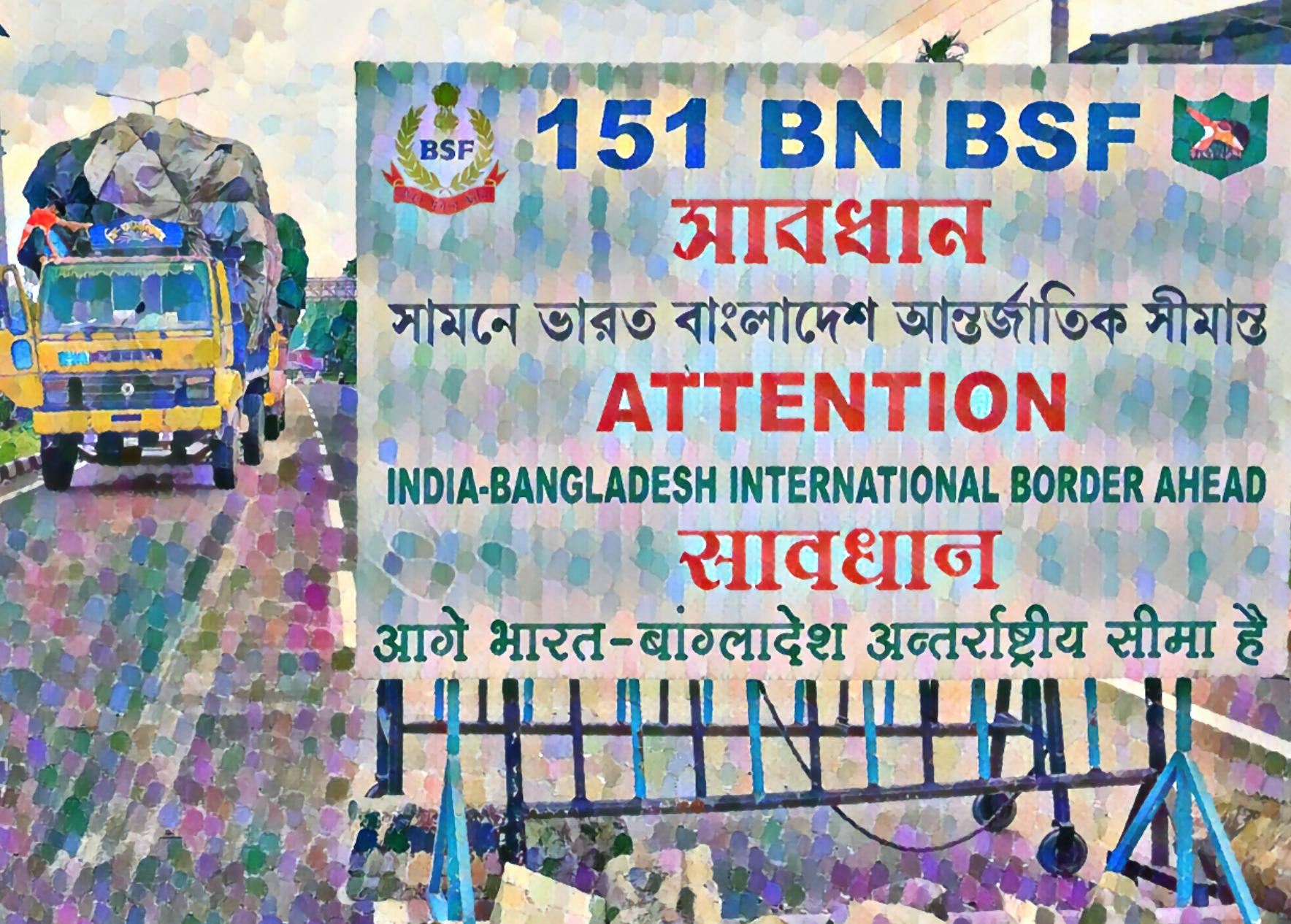India-Bangladesh migration: Why it requires a nuanced perspective

In recent days, two incidents involving Bangladeshi nationals have ignited considerable debate in both Bangladeshi and Indian media.
These events have been reported differently in their respective countries, each sparking controversy in unique ways.
The first incident involves a man, reportedly of Bangladeshi origin, who allegedly broke into the home of Indian actor Saif Ali Khan and injured him during a robbery.
This has led to an uproar within Indian media, with some outlets quickly labeling the perpetrator as a criminal from Bangladesh.
The second event centers around the tragic case of a Bangladeshi woman who was reportedly raped and murdered in India. While some Indian media outlets have been conspicuously silent, influential Bangladeshi newspapers like Amar Desh have devoted significant coverage to the case.
The identity of the alleged perpetrator in the first incident remains shrouded in uncertainty. If indeed he is Bangladeshi, a more nuanced investigation is necessary. What is his background? How long has he lived in India, and under what circumstances? Has he been involved in criminal activities before, or is there any institutional involvement?
To my understanding, it is essential to look beyond national labels and understand the complexities of identity in this context.
When prominent figures from Bangladesh travel to India, they are often embraced as valuable assets, enhancing cultural and diplomatic ties.
However, when an individual from Bangladesh is allegedly involved in a criminal act, they are too easily labeled a perpetrator, often without sufficient evidence.
It’s time to move away from simplistic narratives that reduce people to their national identity as the sole explanation for their actions.
Especially in cases involving criminal behavior, it is crucial to separate identity from nationality, ensuring that individuals are not unfairly defined by their origins.
This distinction is key to fostering a more rational, fair, and compassionate discourse between nations.
The second incident also speaks to a broader, deeply entrenched issue in India: the safety of women.
For many, India has earned the grim reputation of being one of the most unsafe places for women. It is a harsh reality where violence against women has, disturbingly, become commonplace—often so routine that it is almost seen as part of the national fabric.
In this volatile environment, Bangladeshis, particularly women, become easy targets, especially given the heightened tensions between the two countries.

The complex reality of Bangladeshis
in India
These two incidents are, unfortunately, just a microcosm of a larger narrative.
In India, the claim that the country is being “overrun” by illegal Bangladeshi immigrants is all too common. This notion, often amplified by political groups like the BJP, has contributed to a divisive atmosphere.
In Assam, the government has introduced two controversial laws that aim to deport Bangladeshis, laws that have faced intense criticism and sparked mass protests across India.
However, this rhetoric about "illegal Bangladeshis" overlooks an important reality. The migration from Bangladesh to India is not akin to the movement from Bangladesh to Europe, the U.S., or Australia.
People aren’t flocking to India for a better life, as the economic conditions in both countries are nearly identical, and in many social and economic metrics, Bangladesh even outperforms India.
Instead, this migration can be compared to the rural-to-urban movement within Bangladesh itself, where people leave smaller towns for cities like Dhaka in search of work, education, and medical care.
This free-flowing movement of people, particularly in the border regions, is nothing new. For centuries, individuals have crossed the porous border between India and Bangladesh, often traveling for routine matters like medical treatment or shopping.
These areas, remote and often cut off from the rest of their respective countries, share deep familial and cultural ties.
Many Bangladeshis have relatives in India, and vice versa, with cross-border marriages being commonplace.
I, myself, come from a border region and have witnessed firsthand the complexities of this migration.
The Lalmonirhat border, near Nilphamari in Bangladesh, is one such area where travel to Indian towns for practical reasons—like medical care—is far more accessible than heading to a larger city in Bangladesh.
For many in these border regions, this is not a question of migration for better opportunities; it's simply a way of life, a movement dictated by necessity, not desire.
Some people migrate temporarily for work or health needs, while others settle across the border, just as they would in any other major city in Bangladesh.
The realities of this cross-border life—both the hardships and the familial connections—are rarely captured in the media's polarized portrayal of migration.

Border ties and migration myths
To understand the dynamics of cross-border migration, one must first look at the internal geography of Bangladesh.
Many district towns and thana (police precinct) headquarters in the country experience similar patterns of movement. In numerous thanas, people don’t always travel to their own district capital for services or work. Instead, they head to neighboring districts where the communication system is more efficient and the distances shorter.
Take, for example, people from my own Jaldhaka Thana: rather than traveling to Nilphamari Sadar, they frequently go to Rangpur district for their needs.
The ease of access and better connectivity with Rangpur make it a more practical destination.
Similarly, for many people in Bangladesh’s border regions, traveling to India can be more convenient and closer than traveling to other parts of Bangladesh.
This historic free movement of people between India and Bangladesh has been ongoing for centuries, and it has created a natural flow of migration.
Just as people from rural Bangladesh migrate to urban areas in search of work and opportunity, people in these border regions often travel to, and sometimes settle in, India.
However, this migration is not driven by the same motivations as the movement to Europe or America, which some in India might imagine with a sense of self-satisfaction. The migration to India is not about seeking a better life, but about fulfilling practical needs in a neighboring country.
India has developed certain sectors, such as its medical services, which are considered by many to be superior to those in Bangladesh. As a result, many Bangladeshis travel to India for medical treatment.
The country’s vast landscape and diverse offerings also make it a popular tourist destination. Additionally, the cost of certain goods—such as leather products—is lower in India than in Bangladesh, thanks in part to policies that have undermined the Bangladeshi leather industry and shifted much of the business to India.
The lower prices of cosmetics and other items are similarly linked to an India-friendly business environment that has flourished due to irrational taxes and VAT, while rising costs in Bangladesh for energy and production have strained the economy.
However, just because Bangladeshis travel to India to take advantage of lower prices or better services, it doesn't mean that India is inherently more developed than Bangladesh.

The nuanced cases for human movements
Europeans and Americans, for example, often flock to Bangladesh’s Bongobazar and New Market to buy clothes in bulk, but that doesn’t imply that Bangladesh is more developed than the West.
In fact, each country has regions where certain products or services are superior.
For instance, Bogura is known for better yogurt, Comilla for rasmalai, Rajshahi for mangoes, and Chandpur for fish. These regional differences do not suggest that these cities are more developed than Dhaka—just that they excel in specific areas.
The frequent claim in India that millions of illegal Bangladeshis are residing in the country is a distortion of the truth.
The reality is that over 2.6 million Indians work in Bangladesh, many of them illegally, with Bangladesh being India’s fifth-largest source of remittances.
Rather than framing the migration issue through a lens of "illegality" and nationalistic rhetoric, it is important to recognize the historical, economic, and cultural ties that bind the two countries and the mutual exchange that occurs on both sides of the border.
Bengal’s prosperity is deeply rooted in history. While the migration of people from Bengal to developed countries is a relatively recent phenomenon, the region has long been a destination for Europeans and Americans.
For centuries, they arrived, exploited Bengal’s wealth, and then left, often without leaving a lasting positive impact.
The crisis Bengal faces today is not economic but a leadership crisis. It is clear that with a strong, visionary leader, Bengal could rise once again to its former heights of prosperity.
When that happens, it won’t just be Bangladeshis seeking a better life here—many displaced Indians, alongside the 2.6 million already in the region, will also flock to Bengal, hoping to turn their own fortunes around.
That day may be closer than we think.
—
Sagor Hasnath is a former government employee turned-entrepreneur

